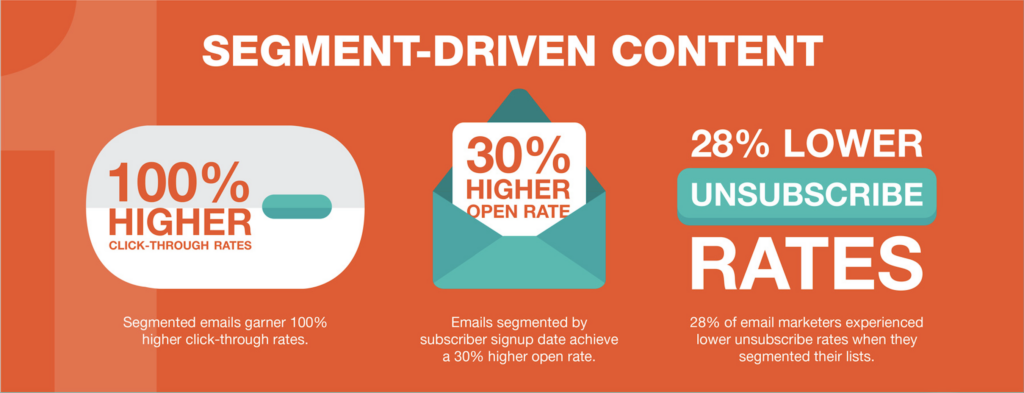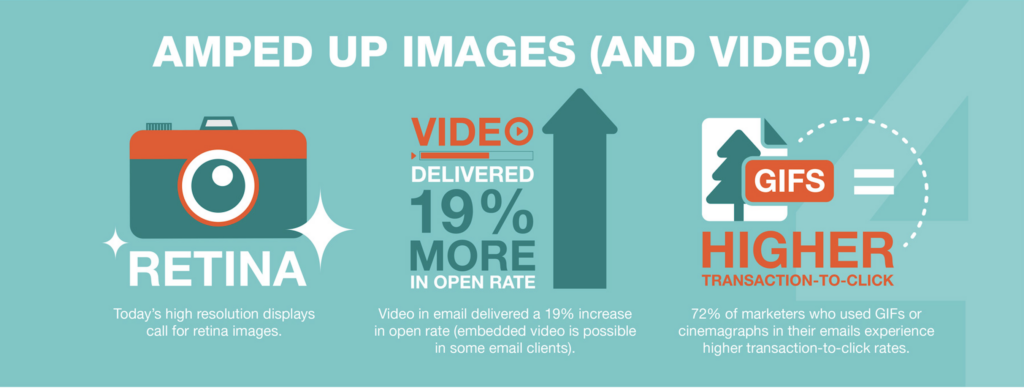Updated on 11.05.24
In 2024, when seemingly everyone is including email in their marketing strategies, how do you cut through the clutter of the inbox and reach your customers?
Over the years, we’ve helped clients build robust, scalable email programs—from lead nurture streams to customer loyalty campaigns. Here are a few important questions we’ve heard frequently—and answers based on up-to-date best practices for maintaining a vibrant email list, nurturing leads, automating processes and ensuring your emails land exactly where they belong—in the inbox!
Question: What’s the best way to keep my email list well-maintained?
Answer: First things first: maintaining a clean and engaged email list is your secret sauce for effective email marketing. The fastest way to build up your email list is to buy one. This allows for immediate engagement and looks good on paper as your list went from 0-2,000 in an instant, but has proven to be a double-edged sword. When you purchase a list, you risk sending unsolicited emails to potential customers, which can annoy recipients, leading them to negative perceptions of your brand.
Instead, think of your email list as a finely tuned engine; it needs regular maintenance (and some TLC) to run smoothly. Start by clearing out inactive subscribers who haven’t engaged with your content in the last six months. This not only boosts your open rates but also enhances your sender reputation, keeping you out of the dreaded spam folder.
Once your list is tuned up, it’s time to build it organically. Promoting your email program on your website or social media platforms, sending emails at consistent times, and making it easy for recipients to opt out is a great way to build trustworthiness and let the recipient engage in their own time.
And don’t forget the power of double opt-in! Sending a confirmation email ensures that only those truly interested in your content join the party, and leads to higher open rates.
Question: What is lead nurturing?
Answer: Quick answer? The heart and soul of building lasting customer relationships. This isn’t just about closing a sale; it’s about guiding your leads through their buying journey with care and attention.
Lead nurturing builds relationships with buyers at every stage of the customer journey or sales funnel. Segmenting your audience based on behaviors and interests, creating valuable and informative content tailored to each segment, and utilizing automation to send personalized messages at optimal times are all great ways to connect authentically with your buyers.

Additionally, engaging leads through interactive content, such as quizzes or surveys, can enhance their experience and keep them invested in your brand. You can also look at previous buying behaviors and tailor content based on where your recipient is in the sales funnel. This strategy has proven to increase conversion rates by 73%.
At LoSasso, we start our nurture stream programs by developing “bait” at each level of the funnel—a high-value, gated piece of content for each stage of the buyer’s journey. This allows us to assign a funnel stage to each lead and nurture them accordingly via email. Email content is designed to educate, inform and push prospects down the funnel as the email stream progresses.
We also utilize various channels, from email to social media, to keep audiences engaged at every stage of their journey. It’s all about delivering the right information at the right time, guaranteeing they feel supported and informed. Plus, to keep audiences engaged and continually provide fresh content, we switch up the formats of our emails (GIFs, video, etc.).

Question: How does email automation help nurture my leads?
Answer: Imagine sending welcome emails or follow-ups based on buyer-specific actions without lifting a finger.
Email automation is a game changer for nurturing leads and enhancing your efficiency. It allows you to create workflows that seamlessly manage these communications. For example, if a lead downloads a resource, you can automatically trigger a series of follow-up emails that provide additional insights related to that topic. With email automation, you can send different messages to various segments of your audience, ensuring the right messages reach the right people. And, consistent effort pays off—Businesses that excel at nurturing leads generate 50% more sales-ready leads at a 33% lower cost.
Email automation and AI
Predictive and generative AI are great tools to help automate more of your email process. By leveraging generative AI, businesses can craft personalized email content at scale, analyzing user data to generate messages that resonate deeply with individual preferences.
This makes A/B testing a breeze, as AI can generate different versions of content to test on the fly—from content to design.
However, there are potential pitfalls to be aware of. Relying too heavily on AI can lead to generic messaging if not properly monitored, risking a disconnect with your audience and leading to mistargeted or non-personalized emails. Mistargeted emails can have severe consequences, as 68% of people automatically delete them. It’s important to find the balance between automated and human in order for your content to feel authentic and relevant.
Question: How do I keep my emails out of the spam folder?
Answer: What’s the use of all this hard work if your emails end up in the spam folder? Here are a few ways to keep your messages in the primary inbox.
Firstly, is your email domain authenticated? You can use safeguards like:
Sender Policy Framework (SPF)
Compares the sender’s Internet Protocol (IP) to a list of authorized IPs from that domain.
DomainKeys identified Mail (DKIM)
Makes sure the email isn’t tampered with or corrupted during the sending process.
Domain-Based Message Authentication, Reporting & Conformance (DMARC)
Requires both SPF and DKIM to send and receive mail. DMARC also has a function that can flag domain owners about emails that pass or fail these checks, alerting them about potential authentication issues.
All of these confirm that your emails are legitimate and not malicious.
When it comes to subject lines, steer clear of spammy language like “Free” or “Guaranteed.” Instead, craft clear and engaging subject lines that pique curiosity and encourage recipients to open your emails. Try to avoid excessive use of caps or exclamation marks, too.
Lastly, regularly monitor your engagement metrics. High bounce rates or low open rates are red flags that your emails may be getting flagged as spam. Keep your communications flowing smoothly by consistently cleaning your email list and optimizing your content.
Set your emails up for success
By maintaining a clean and engaged email list, nurturing leads with personalized content and embracing the power of automation—including the exciting potential of generative AI—you set the stage for success.
At LoSasso, we’re passionate about helping our clients navigate these changes and thrive in a competitive digital world. Ready to elevate your email marketing strategy? Let’s connect.

![Ask us anything: Email marketing edition [2024]](https://www.losasso.com/wp-content/uploads/2017/08/LOIM_AMA-email_blog_1200x472.png)
